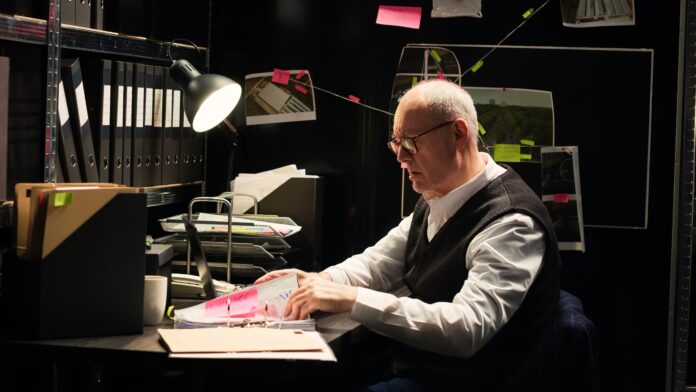The latest work of Mike Wolfe is gaining attention across the country for its care and celebration of America’s culture and heritage. Wolfe, best known as the storyteller and scout on History Channel’s American Pickers, has spent the last forty years salvaging and celebrating the artifacts of American life. With the restoration of a vintage Columbia, Tennessee, gas station, Wolfe’s commitment to preservation has found its latest, and possibly most poignant, expression.
The Columbia station is more than a personal accomplishment; it is a community landmark of lost Americana. Wolfe has not just fixed an old building; he has restored an entire layer of history that the relentless march of time and neglect had all but buried.
A Lifelong Passion Turned Reality
Wolfe has incorporated an appreciation for “timeworn architecture,” including neon signage, monuments, and other forms of dilapidated Americana, into his vision for American Pickers. Wolfe hindsight scours and dreams for things that, while decaying, still hold significant value and historic narrative. The Columbia station epitomizes this intersection.
With Wolfe’s renovation, The Columbia Station transformed from an eyesore to a nostalgic icon of America’s roadside history. While improving the substructure, Wolfe simultaneously reinforced the station’s vintage identity by retaining its gabled roof, the tile work, and the pumps, allowing for history and the present to have a symbiotic relationship.
Preserving More Than Just Bricks and Mortar
Wolfe’s efforts highlight a profound intertwining of architecture, aesthetics, and civic framing in social life: the stories—and the social ties—woven into the physical spaces. Civics in rural America has tended to include, in an often-overlooked way, social exchange from gas stations. His efforts in this case reclaim neglected rural social frameworks and the value of community history.
Wolfe often expresses the necessity of restoring not just the artifacts but also the memories and significance that they hold. This project serves as a functional example of that philosophy and is part of the daily existence of a still living, story-full place.
Revitalizing Columbia, Tennessee
Mike Wolfe’s initiatives have, perhaps, worked quietly but diligently on the fortunes of Columbia itself. Since the site began to garner attention, travelers and historians have rerouted their itineraries towards Tennessee. The restored site has, as unofficial landmark, drawn in historians and travelers for the vintage Americana and travel nostalgics.
Merchant premises around the square have also noted a consistent increase in business, and residents have a fair reason to feel pride as their landmark receives attention from outside the county. Wolfe’s dedicated work expands his impact beyond the site’s reputation to the area’s civic life, supporting the single, weather-beaten façade revitalizing civics infrastructure, Wolfe is simultaneously renewing a community.
A Tribute to American Craftsmanship.
Mike Wolfe didn’t undertake the restoration of the Texas gas station by himself. It brought together a network of master craftsmen, antique experts, and committed conservationists. Wolfe’s attention to detail included the gas station’s custom reproduced porcelain signs, and therefore, every element, even the aggregates, was meticulously restored to and authentic to its period. Every step of the way, the America gas station was turned into a “living document” of American artistry through attention to detail, material provenance, and American craftsmanship.
The restoration work for each element of the gas station was methodical and deliberate, and it clearly reveals Wolfe’s lifetime of work and the pride he takes in American field work. Wolfe was restoring the gas station out of love, and respectful appreciation towards those who contributed their skill and molded the American landscape we see today.
Inspiring the Next Generation.
Amidst a consumer society that prizes the flashy and the novel, Wolfe’s work stands as both a witness and witness-maker, proclaiming that every stratum of the past contains valuable lessons that deserve to be protected and taught.
A central defining feature of the Wolfe project is its function as a pedagogical benchmark. The renovated station is intended to function as a field laboratory to which school children and college interns would be drawn, illustrating how local artifacts can tell far-reaching stories. Wolfe believes that material culture contains stories that invoke curiosity far richer than what textbooks can provide. He invites young people to listen and then respond by rescuing the beaten and the broken.
Documenting Beauty: America’s Underappreciated Spaces.
This is a witness to a far broader narrative than is immediately apparent: by documenting the healing process through social media and reporters, Wolfe extends an invitation for all to witness the beauty he sees in what is often overlooked in America. The second part of the title speaks to the restored facility’s function: it is more than a mere depot; it is a clarion call.
The first part encapsulates Wolfe’s profoundly personal mission: to document beauty in the American landscape that is often overlooked. Wolfe continues to ring the clarion for enduring stories that deserve far greater attention than they get.
Final Thoughts: A Living Legacy.
With this effort, Wolfe has created an asset that outlives any episode or exhibition object. The center acts like a bridge that links the past with the present and inspires every visitor to continue the exchange. Its walls alone affirm the significance of heritage, community, and the tangible experience.
In a culture that cherishes quickness, the station dares to encourage us to stop, look, and appreciate the events that shaped us. With sheer determination, creative vision, and respect for history, Mike Wolfe has not just rehabbed a building. He has reignited a nationwide conversation on how to conserve the American spirit.

